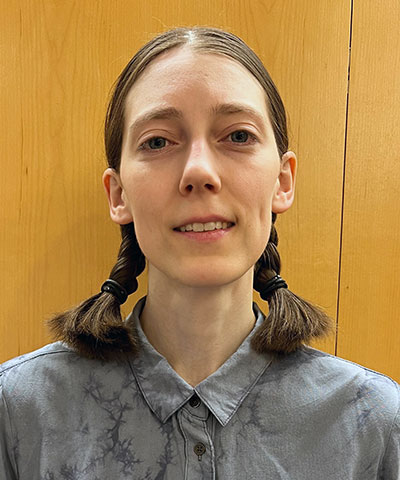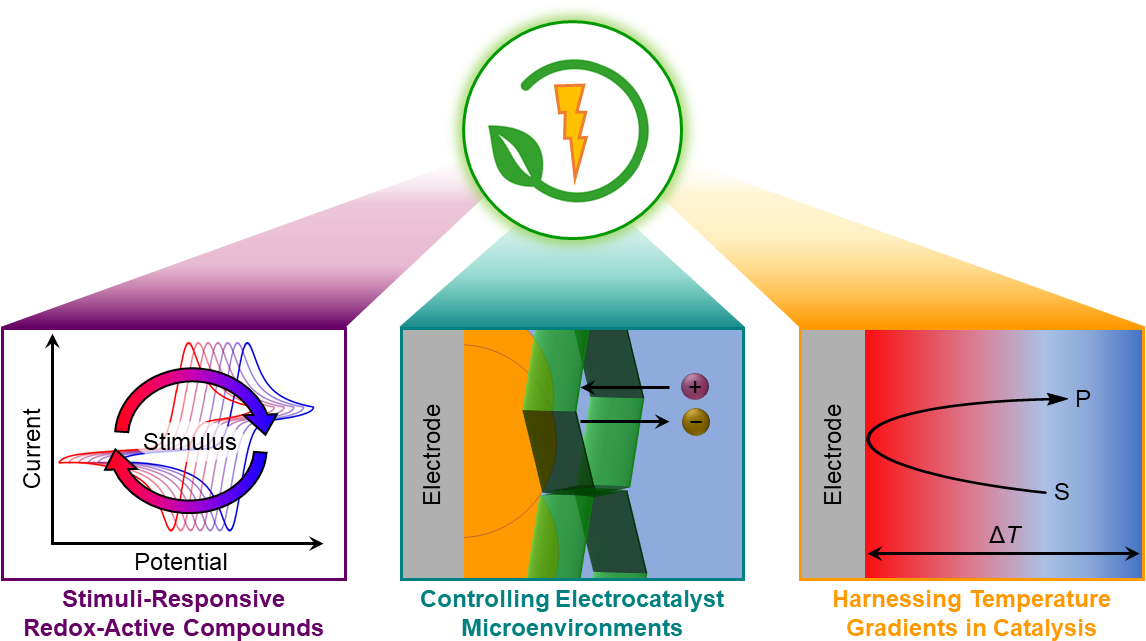
Agnes E. Thorarinsdottir
she/her/hers
Assistant Professor of Chemistry
PhD, Northwestern University, 2020
- Office Location
- B42 Hutchison Hall
- Web Address
- Website
Office Hours: By appointment
Research Overview
In the Thorarinsdottir group, we seek to apply the tools of synthetic molecular and materials chemistry to the design of new electrochemical systems that address challenges in energy, catalysis, and environmental sustainability. We are developing new synthetic strategies for enabling precise control of the chemical and physical properties of electrochemical interfaces in efforts to increase the energy efficiency and selectivity of reactions and devices. Particular emphasis is placed on creating new electrochemical systems for (i) sustainable production of electricity, fuels, and organic chemicals, (ii) efficient energy conversion, and (iii) electrochemical sensing.
Members of the group will have interdisciplinary experience spanning inorganic chemistry, materials chemistry, electrochemistry, and catalysis. In addition, members will gain expertise in synthetic techniques, ranging from air-free procedures to nanofabrication and become skilled in a suite of chemical, physical, and electrochemical characterization techniques.

Research Interests
- Inorganic chemistry
- Materials chemistry
- Electrochemistry
- Stimuli-responsive molecules and materials
- Catalysis
- Clean energy
Selected Publications
- Thorarinsdottir, A. E.#; Erdosy, D. P.#; Costentin, C.; Mason, J. A.; Nocera, D. G. “Enhanced Activity for the Oxygen Reduction Reaction in Microporous Water.”Nat. Catal.2023. (DOI: 10.1038/s41929-023-00958-9).
- Veroneau, S. S.; Thorarinsdottir, A. E.; Loh, D. M.; Hartnett, A. C.; Keane, T. P.; Nocera, D. G. “Electrolyte-Induced Restructuring of Acid-Stable Oxygen Evolution Catalysts.” Chem. Mater. 2023, 35, 3218–3225. (DOI: 10.1021/acs.chemmater.3c00032).
- Veroneau, S. S.; Hartnett, A. C.; Thorarinsdottir, A. E.; Nocera, D. G. “Direct Seawater Splitting by Forward Osmosis Coupled to Water Electrolysis.” ACS Appl. Energy Mater. 2022, 5, 1403–1408. (DOI: 10.1021/acsaem.1c03998).
- Thorarinsdottir, A. E.#; Veroneau, S. S.#; Nocera, D. G. “Self-Healing Oxygen Evolution Catalysts.” Nat. Commun. 2022, 13, 1243. (DOI: 10.1038/s41467-022-28723-9).
- Thorarinsdottir, A. E.; Costentin, C.; Veroneau, S. S.; Nocera, D. G. “p-Block Metal Oxide Noninnocence in the Oxygen Evolution Reaction in Acid: The Case of Bismuth Oxide.” Chem. Mater. 2022, 34, 826–835. (DOI: 10.1021/acs.chemmater.1c03801).
- Thorarinsdottir, A. E.; Nocera, D. G. “Energy Catalysis Needs Ligands with High Oxidative Stability.” Chem Catal.2021, 1, 32–43. (DOI: 10.1016/j.checat.2021.05.012).
- Thorarinsdottir, A. E.; Harris, T. D. “Metal–Organic Framework Magnets.” Chem. Rev. 2020, 120, 8716–8789. (DOI: 10.1021/acs.chemrev.9b00666).
- Du, K.; Thorarinsdottir, A. E.; Harris, T. D. “Selective Binding and Quantitation of Calcium with a Cobalt-Based Magnetic Resonance Probe.” J. Am. Chem. Soc.2019, 141, 7163–7172. (DOI: 10.1021/jacs.9b02661).
- Thorarinsdottir, A. E.; Tatro, S. M.‡; Harris, T. D. “Electronic Effects of Ligand Substitution in a Family of CoII2PARACEST pH Probes.” Inorg. Chem. 2018, 57, 11252–11263. (DOI: 10.1021/acs.inorgchem.8b01896).
- Gaudette, A. I.; Thorarinsdottir, A. E.; Harris, T. D. “pH-Dependent Spin State Population and 19F NMR Chemical Shift via Remote Ligand Protonation in an Iron(II) Complex.” Chem. Commun. 2017, 53, 12962–12965. (DOI: 10.1039/C7CC08158H).
- Thorarinsdottir, A. E.; Du, K.; Collins, J. H. P.; Harris, T. D. “Ratiometric pH Imaging with a CoII2 MRI Probe via CEST Effects of Opposing pH Dependences.” J. Am. Chem. Soc.2017, 139, 15836–15847. (DOI: 10.1021/jacs.7b08574).
- Thorarinsdottir, A. E.; Gaudette, A. I.; Harris, T. D. “Spin-Crossover and High-Spin Iron(II) Complexes as Chemical Shift 19F Magnetic Resonance Thermometers.” Chem. Sci.2017, 8, 2448–2456. (DOI: 10.1039/C6SC04287B).
(#Equal contributions. ‡Undergraduate coauthor).
